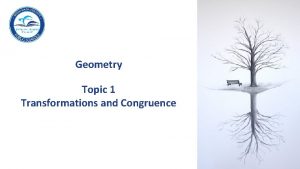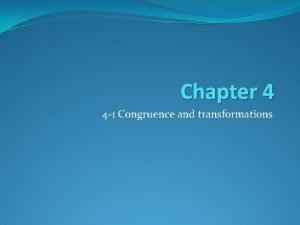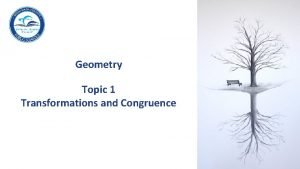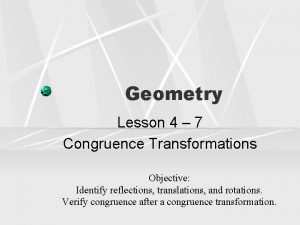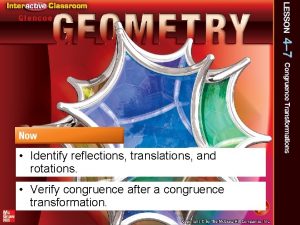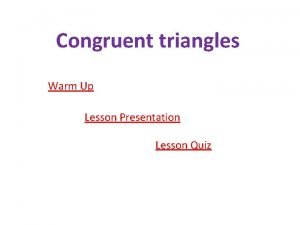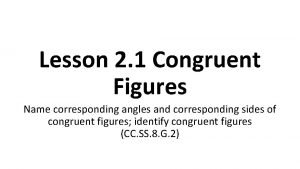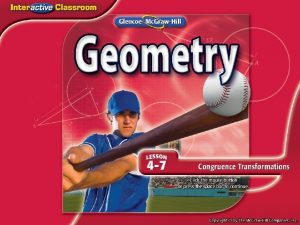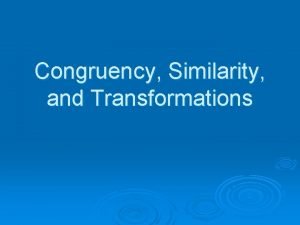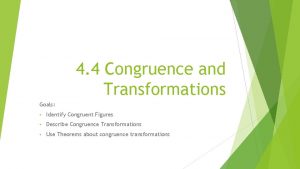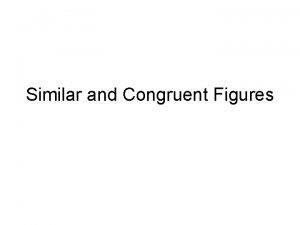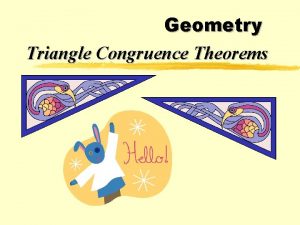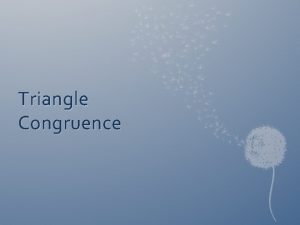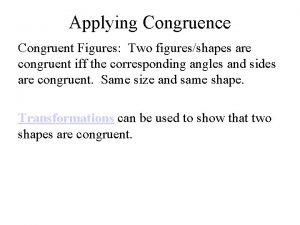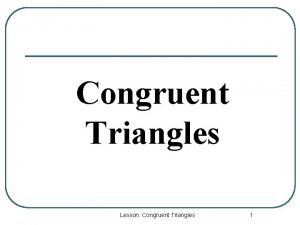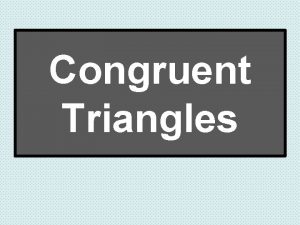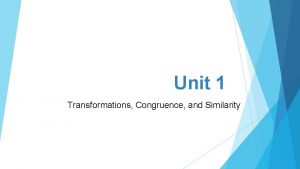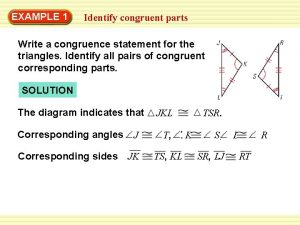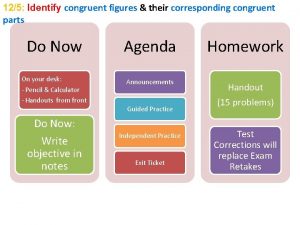4 4 Congruence and Transformations Goals Identify Congruent













- Slides: 13

4. 4 Congruence and Transformations Goals: • Identify Congruent Figures • Describe Congruence Transformations • Use Theorems about congruence transformations

Congruent Figures Two geometric figures are congruent figures if and only if there is a rigid motion that maps one of the figures onto the other. Congruent figures have the same shape and size.

Example 1: Identifying Congruent Figures Identify any congruent figures in the coordinate plane. Explain.

You try! 1) Identify any congruent figures. Explain.

Congruence Transformation Another name for a rigid motion or combinations of rigid motions is a congruence transformation because the preimage and image are congruent.

Example 2: Describing a Congruence Transformation Describe a congruence transformation that maps parallelogram ABCD to parallelogram EFGH. If you reflect parallelogram ABCD in the yaxis, as shown. Then parallelogram A’B’C’D’ has the same orientation as parallelogram EFGH. You can then translate parallelogram A’B’C’D’ 4 units down to map parallelogram A’B’C’D’ to parallelogram EFGH.

You try! Reflection in the y-axis followed by a translation to the right 5 units.

Reflections of Parallel Lines Theorem

Example 3: Using the Reflections in Parallel Lines Theorem 9 9 4 d c. GG” = 2 d = 2(9+4) = 26 4

You try!

Reflections in Intersecting Lines Theorem

Example 4: Using the Reflections in Intersecting Lines Theorem In the diagram, the figure is reflected in line k. The image is then reflected in line m. Describe a single transformation that maps F to F”.

You try! 5) In the diagram, the pre-image is reflected in line k, then in line m. Describe a single transformation that maps the blue figure onto the green.
 Strategic goals tactical goals operational goals
Strategic goals tactical goals operational goals Strategic goals tactical goals operational goals
Strategic goals tactical goals operational goals Transformations and congruence
Transformations and congruence Week 1: congruence transformations
Week 1: congruence transformations Transformations and congruence
Transformations and congruence A polygon with six congruent sides and six congruent angles
A polygon with six congruent sides and six congruent angles 4-7 congruence transformations
4-7 congruence transformations How to verify a congruence transformation
How to verify a congruence transformation Quiz 4-1 congruent triangles
Quiz 4-1 congruent triangles Corresponding angles congruent
Corresponding angles congruent An operation that maps an original geometric figure
An operation that maps an original geometric figure Congruent objects are
Congruent objects are General goals and specific goals
General goals and specific goals Motivation in consumer behaviour
Motivation in consumer behaviour


